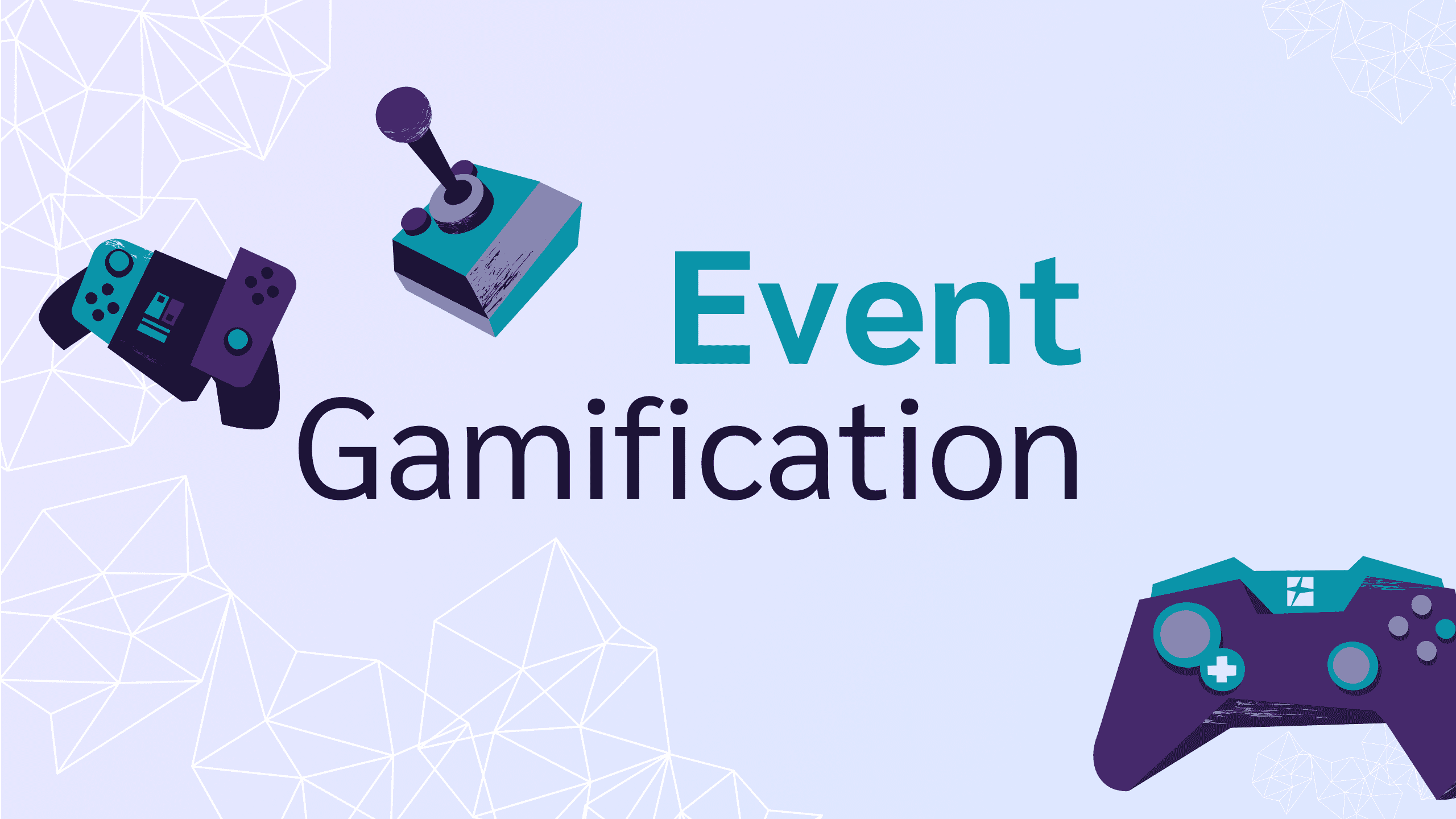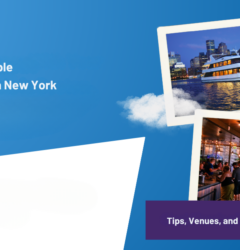02 Sep

8 Virtual Event Gamification Ideas to Encourage Engagement
Doesn’t everyone love industry events? They offer a chance to network, to investigate new products and services, to be introduced to innovation in your sector and, of course, there’s always the bar at the end of the day (just for a sociable glass of wine). In recent years, there has, however, been a shift from live to virtual and hybrid events.
A large part of that was due to the pandemic. After all, the show must go on, even if it has to happen using video conferencing apps or your cloud-based telephone system. There’s also the logistical barrier of distance to consider, though. If a company is operating in the global marketplace, it’s not always realistic for people to attend from diverse geographical locations.
No matter the type of event you host, you have two main hurdles to overcome; ensuring a good level of attendance and then ensuring that those who do attend engage well at the event. One major tactic that can not only ensure people engage at your event but also have fun is event gamification.
Just what is event gamification? More importantly, how do you incorporate it into your event in such a way that attendees engage and enjoy a competitive experience, just like when playing a blockchain game, for example?
What is event gamification?
Put simply, event gamification involves integrating game and competition elements into environments where you may not normally find them (such as virtual events). It can be a fantastic way of having your attendees engage with you, but also introducing educational elements related to the purpose of the event.
Gamification in a virtual environment does present certain challenges to organizers because attendees aren’t actually physically present. So, it’s easier for them to lose focus or attention due to external distractions wherever they are located. However, the competitive nature of event gamification, along with prizes, leader boards, and other related elements, can be a great way to ensure engagement.
Integrating an element of gamification to your virtual event brings several benefits. It can bring out attendees’ competitive spirit, motivate higher levels of participation, and help break the ice when you have virtual attendees from diverse locations. It can also help create and nurture relationships and bonding between attendees who may never have interacted before.
From another perspective, it allows you to bring sponsorship into your event. You can involve other companies by allowing them to provide or sponsor prizes in your games which makes your event gamification efforts more attractive, while giving those partners the opportunity to spread brand awareness.
8 virtual event gamification ideas
Understanding the concept is one thing, but actually coming up with event gamification ideas can often present organizers with a real challenge. Here are eight great ideas to give you some inspiration:
1. Create your own games
It can often be a good idea to create your own custom games related to the theme of the event. These could take the form of quizzes (allowing you to assign teams that foster both bonding and networking) or virtual treasure hunts. For example, you could have a quiz that relates both to your products but incorporates elements of the phonetic alphabet.
A virtual treasure hunt could involve clues being found on different landing pages of your website. This could be either a team or an individual activity (though the former again helps attendees bond with one another). Incentivizing these sorts of games with sponsored prizes can raise both engagement and enthusiasm levels.
2. Break the Ice
Finding a simple game to break the ice can be a great way to open an event and can be a better alternative than simply swapping QR business cards. Again, an ice breaking game could be done on an individual level or by assigning attendees to teams to encourage collaboration. The primary rule here is to make it fun so that people feel comfortable quickly.
For example, if you have a relatively small number of attendees, a good opening game would be for each participant to share their funniest workplace story, with other participants giving each story a score. By bringing a high level of humor into your event at such an early stage, you’re ensuring that people can see your event has a fun side as well as a serious one.
3. Recognize the Leaders
People like to win, even if winning is only temporary. Recognize people for achievements in individual events or have an overall leaderboard, either way, regular updates on leaders or particular achievements (Hey! George from XYZ Ltd. just scored a new record score) not only flatters people but makes them feel more invested in your event.
Depending on how your virtual event has been set up, you may be using an event platform or software that lets you send real-time notifications to all participants. Real-time notifications can help increase competitiveness and excitement (especially when things are close). If you don’t have that ability, simply send emails to all your attendees when any event is complete so they know who won.
4. Use Cards
The beauty of a virtual event is that you can incorporate almost any idea into your event gamification project plan. Collectible cards have always been popular and it’s a gamification idea you can easily adapt to your virtual event (with digital cards, of course). You can even offer prizes at the end of the event for the people who have collected the most cards or those who have found rare ones.
Maybe you are running sessions on how to successfully start a new business. Attendees could gain cards for any sessions they attend and could gain extra cards for pop quizzes on the different elements involved. If you’ve awarded random cards, you can even encourage networking by allowing people to swap duplicate cards with others.
5. Use Sponsors
You may be holding an event for any number of reasons, but it will often be to promote a product or service you provide, such as a contact center on cloud solution, a new clothing line, or anything in between.
However, virtual events also offer the opportunity for you to seek some sponsorship and prizes for your event gamification and that can include other areas of your own company or organizations that offer complementary products, such as club membership software.
Of course, sponsors will want something in return and it could range from simple brand awareness to concrete leads that may lead to sales. You can even integrate them into the event gamification process by awarding points to participants who attend a sponsor’s session or visit their virtual booth. Sponsorship can go way beyond simple prizes.
6. Teamwork makes the dream work
Let’s be honest here; unlike real life events, a big problem with virtual events is that people aren’t really meeting, which means you need to find ways to encourage networking. By assigning attendees into teams, you can encourage both attendance and networking. Award points for everything from actually attending the event to participating in quizzes and sessions.
Let’s say you have 100 attendees. You could split them into 10 groups of 10, then award each team member five points for attending, as well as differing levels of points for their placing in different games, or points for attending any sessions you’ve organized such as a one-hour webinar on planning inventory management, for instance.
7. Passports
If you’re organizing a larger event with multiple companies exhibiting their products and services, one way you can gamify the event is to provide each attendee with a virtual passport. They can then get it stamped (virtually, of course) by each exhibitor they visit or at each session they attend. Award points for each visit they make and keep a running leaderboard.
This is again something that can be incentivized. You could award prizes for the top three scorers, for example. But be sure to implement parameters so that people don’t just “stick their head in” to a session to gain a stamp. There must be evidence of concrete engagement and participation in order for their passport to be stamped.
8. Trivia Quizzes
You don’t just want people attending your virtual event, you want them to actively engage with you and to take part in things such as sessions and workshops.
While trivia quizzes can be a fun icebreaker, they can also encourage participation and, perhaps more importantly, give you feedback that people have been “paying attention”. You could incorporate your HTML5 Video Player for aspects of the quiz to add some variety.
You can again offer prizes in this area, whether for individual quizzes or a cumulative score. For example, if you have a session on entertainment analytics, then you can have a dedicated trivia quiz on what was discussed during that session with prizes such as cash or discount vouchers being awarded to those who scored the highest.

The Takeaway
Virtual events present different challenges from live events but ensuring high levels of attendance and engagement remains key.
By integrating event gamification, you can significantly increase rates of both engagement and attendance. Not only that, but you also introduce a fun aspect to your event, no matter how ‘dry’ the primary focus may seem.
If you’re new to virtual events or to including event gamification as part of your planning, be sure to collect feedback from participants afterwards. This not only measures how successful your planning for that event was, it can help you improve future events.
Adam Hausman co-founded RSVPify in 2013 and has been passionate about event tech and ticketing software ever since. Also founder of Greenlight Growth Marketing, he holds degrees from Indiana University (BA English/Psychology 2008) and the University of Illinois-Chicago (M.Ed. Secondary Education 2012). He lives in Maine with his wife, 2 kids, and 2 annoying cats.












Adam Hausman